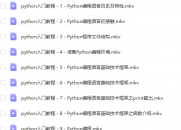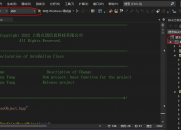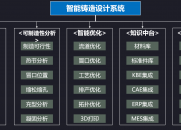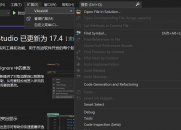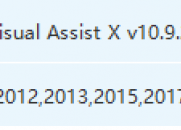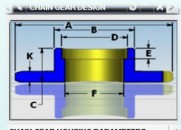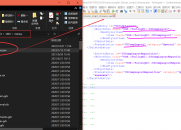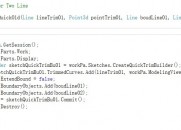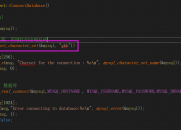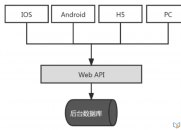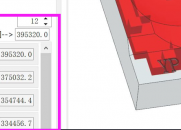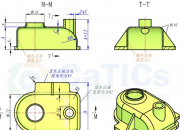|
|
请使用QQ关联注册PLM之家,学习更多关于内容,更多精彩原创视频供你学习!
您需要 登录 才可以下载或查看,没有账号?注册

x
I7 r% ?9 E) f+ c" Y171. 更改运行调度程序的操作系统用户后,populatefsc 中止在 TRANSLATIN状态
" x: r0 h9 Y( a+ ^- N9 u# H6 a2 ~8 X2 o! M: N n8 L4 ]
问题
3 J2 [7 h' a# R默认情况下,该模块使用 2 层的自动登录,如果操作系统用户不是 Teamcenter 用户,该
* ~, F( \9 j Z( |9 ]模块中的功能无法登录
5 Q3 o, S) B- ?* O1 [! c& W. ^" x3 l# k2 X6 n9 u7 i* `
ERROR - 2018/11/29-10:51:46.962 UTC - NoId - 515143: The login attempt failed: either the
! _, P# G1 M y7 }- Huser ID or the password is invalid.
, h" h* M, p. _/ R: |- }* f/ {
. i8 \1 i% {4 A2 }. Q2 Z2 F方法 " A/ k9 `8 w" v2 {, n: [% W
修改 populatefsc 脚本,增加登录信息 0 D; \1 }% _6 ?
在 populatefsc.bat 文件中,在 TC_ROOT 和 TC_DATA 的设定后增加如下行 % G# L# D& _% S2 d: |4 \, z
set TC_DBA_USER=infodba
: y3 v7 Z7 n1 n: w2 I( h; w/ V% k w" q+ D
在 populatefsc.pl 中 :
& ~3 z7 b" v6 U5 g
i( J, |/ G+ N! n8 C# _在 runPLMXMLExport 子程序下增加红色标记的代码 % v0 H/ Z3 Y" R2 @; r
% a: l2 h* R" _( U( {# This will be the full path to the executable.
1 C6 h2 [. @+ R5 \& X( Z! f0 [my $exe_path= "$ENV{'TC_BIN'}${dir_separator}${exe_name}${exe_suffix}"; " U; B* ^" i: b- r4 U" r- f
my $tcdbauser= "$ENV{'TC_DBA_USER'}";
! A0 N0 |& |9 C; B& l( Umy $pwdfile= "$ENV{'TC_ROOT'}${dir_separator}security${dir_separator}server_infodba.pwf"; ) k3 {8 Y3 A; r0 {
# Make sure we can find what we are executing.
* p6 ?" d) [+ S- W$ }# I: Jdie "The ${exe_name} executable was not found at the following location: 7 H; v% F+ K) o" E9 m3 [
${exe_path}\n" unless -x ${exe_path};
8 X) g9 ~- Q' N: K
( k2 p. d X/ ?# _. O' b, q! x2 _# Start building the command line.
9 K: U' l6 f7 G/ R) ~: Lmy @args= ( $exe_path, '-transfermode=ConfiguredDataExportDefault' ); 9 B5 H: _" Q3 f: ?* ]3 Z o
- x$ R/ Z$ f, o9 B, X- j2 ~# Take care of possible empty spaces in the argument values & c8 ^* ]/ d9 H/ b8 X/ W) [: q; U
my $outputFileStr = $hashRef->{'output_file'}; 7 Z2 `) \" t/ o/ l! I0 h8 V* V, @
$outputFileStr = handleEmptySpaceInPath($outputFileStr); : ?8 A! p3 X/ O1 D8 K4 a
my $scoUid = $hashRef->{'uid'}; 0 a+ G a( x! D* R4 F- \
$scoUid = handleEmptySpaceInPath($scoUid);
{/ U: J2 U8 w& H6 I/ j/ b. J, K, V& B) _" M7 j
# Add the extra options. 0 M4 r3 \: Y; p" K. V5 F( J
addOption(\@args, '-xml_file=', $outputFileStr, 1);
1 D& L1 a2 U; t. ?! }) U8 AaddOption(\@args, '-uid=', $scoUid, 1);
; n7 k* c$ g* `( F% K* iaddOption(\@args, '-u=', $tcdbauser, 1); 3 l. L& H F# P
addOption(\@args, '-pf=', $pwdfile, 1);
! p+ d( N! @; q8 y( F+ @ g a$ F% h7 w0 L# s* T* p
在 runLoadFscCache 子程序下增加红色标记的代码 # |; z3 V; M7 K. w; L: n3 Z" A
! F% `8 `3 D' z! \# ?
# This will be the full path to the executable.
5 s' Z2 o3 M0 M z2 Q2 @my $exe_path= "$ENV{'TC_BIN'}${dir_separator}${exe_name}${exe_suffix}"; ! ?' L1 I- P! W$ E! x/ V( Q
: z2 n* W# C8 Y( Lmy $tcdbauser= "$ENV{'TC_DBA_USER'}"; - I( v# }" W3 x M a1 b+ j
my $pwdfile= "$ENV{'TC_ROOT'}${dir_separator}security${dir_separator}server_infodba.pwf";
" e2 w. W* M W# Make sure we can find what we are executing.
6 o0 l0 ~. D, R& U- C( Pdie "The ${exe_name} executable was not found at the following location: 6 t% ~/ @+ t: l' E& R' f: n
${exe_path}\n" unless -x ${exe_path}; 3 U5 ~, D$ @9 w
- }% H) i2 q+ c- @! z# d
# Figure out output information from command line input 0 {( e: l7 I9 _: ?7 S
my $outputFileStr = $hashRef->{'output_file'};
- ?# t8 Q' n- b0 Omy $fscUri = $hashRef->{'targets'}; , \$ f7 b4 G8 H6 }# }
, I* x }* z7 Q# {! \2 s3 v( R' M
# Check possible empty space in the string
3 k* U/ b+ E; g$outputFileStr= handleEmptySpaceInPath($outputFileStr);
7 h! s5 `& d; E. E( i$fscUri = handleEmptySpaceInPath($fscUri);
4 q" [& L& }8 x( P R9 v. w# h
4 r+ c# A2 _5 }2 r7 N. |. s/ z# Add the extra options.
! ]3 a& x3 V8 \" zmy @args= ( $exe_path, '-f=load' );
2 A% c) ~& y M6 o) v% n# J9 d1 ZaddOption(\@args, '-plmxml=', $outputFileStr, 1);
7 w% Y3 Z# q, N4 p4 A vaddOption(\@args, '-fsctargets=', $fscUri, 1);
# D! e0 u+ [/ [& {, O5 CaddOption(\@args, '-u=', $tcdbauser, 1); ( _0 o# z- u! \ u/ \; R! z( e
addOption(\@args, '-pf=', $pwdfile, 1);
! U4 N$ C- p2 L7 G8 }7 P1 U. j, C" D, g P
" Q+ V: z, j# V3 O. t; ]6 ^
. K/ p! }+ `: J5 K$ q |
|
